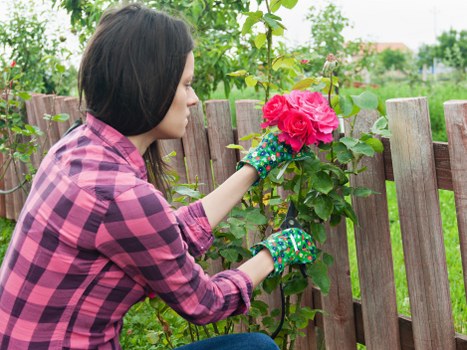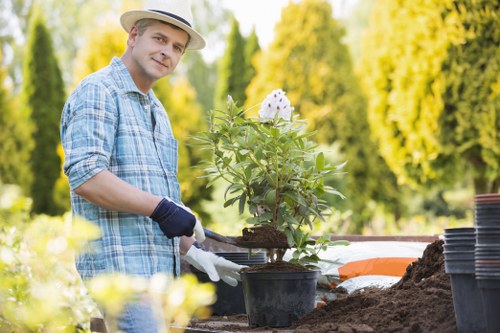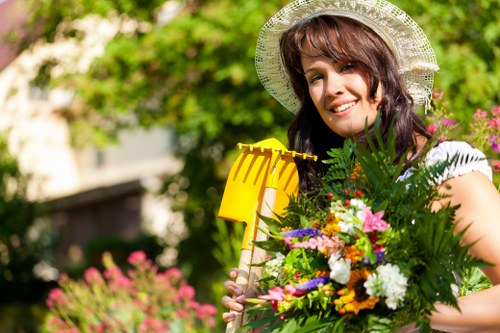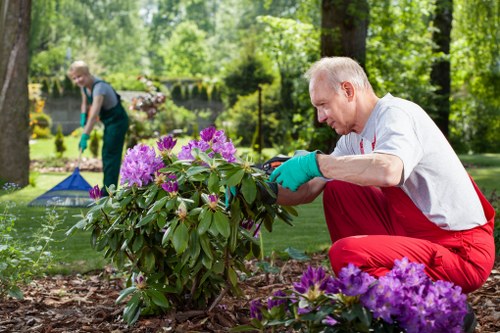Mastering Hedge Trimming in Barking: A Comprehensive Guide
Why Hedge Trimming Matters

Hedge trimming is an essential aspect of garden maintenance, especially in residential areas like Barking. Regular trimming not only enhances the aesthetic appeal of your property but also promotes the health and growth of your hedges.
Well-maintained hedges serve as natural barriers, providing privacy and security. They can also act as windbreaks, protecting your garden from harsh weather conditions.
In addition to their functional benefits, neatly trimmed hedges can significantly boost your home's curb appeal, potentially increasing its market value.
When to Trim Your Hedges

Timing is crucial when it comes to hedge trimming. The best time to trim hedges in Barking is during the late spring or early summer when the plants are actively growing.
Trimming during this period encourages dense growth and helps maintain the desired shape and size of your hedges. Avoid trimming in late summer or autumn, as this can stimulate new growth that may be damaged by cold weather.
Additionally, avoid trimming during drought conditions to prevent stressing the plants. Always consider the specific needs of your hedge species when planning your trimming schedule.
Selecting the Right Tools

Using the appropriate tools is vital for effective hedge trimming. Investing in high-quality pruning shears, hedge trimmers, and loppers can make the task easier and more efficient.
Electric or gas-powered hedge trimmers are ideal for large hedges, offering precision and speed. Manual hedge trimmers are suitable for smaller hedges and more detailed work.
Ensure your tools are well-maintained and sharp to achieve clean cuts, which promote healthy growth and reduce the risk of disease.
Step-by-Step Trimming Process

1. Assess the Hedge
Begin by evaluating the current state of your hedge. Look for any dead or diseased branches and plan your trimming accordingly.
2. Plan the Shape
Decide on the desired shape and height of your hedge. Consistency in shape ensures a professional and attractive appearance.
3. Start Trimming
Begin trimming from the bottom and work your way up, ensuring even cuts. Regularly step back to assess the overall shape and make adjustments as needed.
Maintaining Hedge Health

Proper hedge maintenance extends beyond trimming. Regularly monitor your hedges for signs of pests or diseases and address any issues promptly.
Fertilizing your hedges in the spring can promote robust growth. Additionally, watering during dry spells is essential to keep your hedges healthy.
Pruning should be done carefully to avoid over-trimming, which can stress the plants and make them more susceptible to damage.
Hiring Professional Services
If hedge trimming seems daunting, consider hiring professional gardeners in Barking. Professionals have the expertise and equipment to ensure your hedges are trimmed correctly and safely.
Professional services can also offer additional maintenance tips and help you choose the best hedge species for your garden.
Investing in professional trimming can save you time and ensure long-term health and beauty of your hedges.
Cost Considerations
The cost of hedge trimming in Barking varies based on factors such as the size of your hedges, the complexity of the job, and whether you hire professionals.
While DIY trimming can be more economical, professional services offer convenience and expertise that might be worth the investment.
Always obtain multiple quotes and check reviews to find the best value for your hedge trimming needs.
Eco-Friendly Trimming Practices
Adopting eco-friendly trimming practices contributes to a sustainable environment. Use electric tools to reduce carbon emissions and dispose of green waste responsibly.
Consider composting your trimmed branches and leaves to enrich your soil, promoting a healthy garden ecosystem.
Choosing native hedge species can also support local wildlife and reduce the need for excessive maintenance.
Common Mistakes to Avoid
Avoid over-trimming, which can weaken your hedges and make them vulnerable to pests and diseases. Always trim gradually to maintain plant health.
Incorrect timing is another common mistake. Trimming at the wrong time of year can disrupt the growth cycle and harm your hedges.
Lastly, using dull or inappropriate tools can cause ragged cuts, leading to increased susceptibility to infections.
Seasonal Trimming Tips
Spring
Spring is ideal for a major hedge trim, promoting new growth and shaping your hedges for the growing season.
Summer
Light trimming during summer can maintain shape and encourage dense foliage.
Autumn
Minimal trimming in autumn helps prepare hedges for winter, avoiding stress from excessive cutting.
Enhancing Curb Appeal
Neatly trimmed hedges play a significant role in enhancing your property's curb appeal. They create a well-manicured appearance that reflects positively on your home.
Consider integrating colorful flowers or diverse hedge species to add vibrancy and interest to your garden landscape.
Regular maintenance ensures your hedges remain a standout feature of your property.
Safety Precautions
Always prioritize safety when trimming hedges. Wear appropriate protective gear, including gloves and safety glasses, to prevent injuries.
Ensure your tools are in good condition and follow manufacturer instructions to avoid accidents.
For tall or large hedges, consider using ladders safely or hiring professionals equipped with the necessary safety gear.
Conclusion
Effective hedge trimming in Barking requires proper planning, the right tools, and regular maintenance. Whether you choose to tackle the task yourself or hire professionals, maintaining your hedges ensures a beautiful and healthy garden.
Investing time and resources into hedge trimming can yield significant rewards, enhancing both the functionality and beauty of your outdoor space.
Contact us today to book your hedge trimming service and transform your garden into a picturesque haven.

